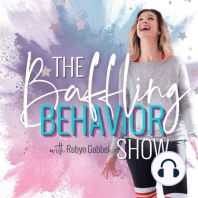34 min listen

REPLAY: What Does Co-Regulation Really Look Like?
REPLAY: What Does Co-Regulation Really Look Like?
ratings:
Length:
58 minutes
Released:
Jan 11, 2024
Format:
Podcast episode
Description
There’s a lot of confusion about what co-regulation really is. Parents often say to me something like “OK, I get it- I’m supposed to give co-regulation instead of a consequence. But- what does that really mean? Like- what does co-regulation actually look like in real life?”Listen to the episode to learn:What regulation really isWhat co-regulation really isThe ‘ingredients’ of co-regulationAn example of in-real-life co-regulation (with an older child)Active vs. passive co-regulationIn this podcast, I mention:Is it really about trust? Or not enough co-regulation? Building the Tower of Self-RegulationRegulation Does Not Equal CalmFREEOne-page PDF infographic on What Does Co-Regulation Really Look Like!CLICK HERE to get the download sent to your inboxYou can read a longer summary AND get a full transcript over at https://robyngobbel.com/coregulationOver on my website you can find:Masterclass and eBook on What Behavior Really Is (FREE)eBook on The Brilliance of Attachment (FREE)Ongoing support, connection, and co-regulation for struggling parents: The ClubYear Long Immersive & Holistic Training Program for Parenting Professionals: Being With
Released:
Jan 11, 2024
Format:
Podcast episode
Titles in the series (100)
Not Flipping Your Lid...When Your Kid Flips Theirs by The Baffling Behavior Show {Parenting after Trauma}